
How to recognise and prevent dog-to-human reactivity

Philippa Short
14 March 2024 | 7 minutes read
Every dog parent wants a loving and affectionate pup who isn’t afraid of humans. But the reality is that fear and reactivity are common issues for many canines.
Expert dog behaviourist Philippa Short explains why your dog is scared of people, how to recognise the signs of reactivity, and how to prevent it.
- What is a reactive dog?
- Why is my dog scared of people?
- Signs of a dog who is scared of people
> The five ‘Fs’ of dog stress
> Subtle signs of dog fear and anxiety
> Escalated signs of dog fear and anxiety - How to prevent dog to human reactivity
- How to help a dog showing early signs of dog to human reactivity
> Things you should never let strangers do with a scared dog - What to do if your dog shows escalated signs of reactivity towards humans
> How to socialise a reactive dog to humans
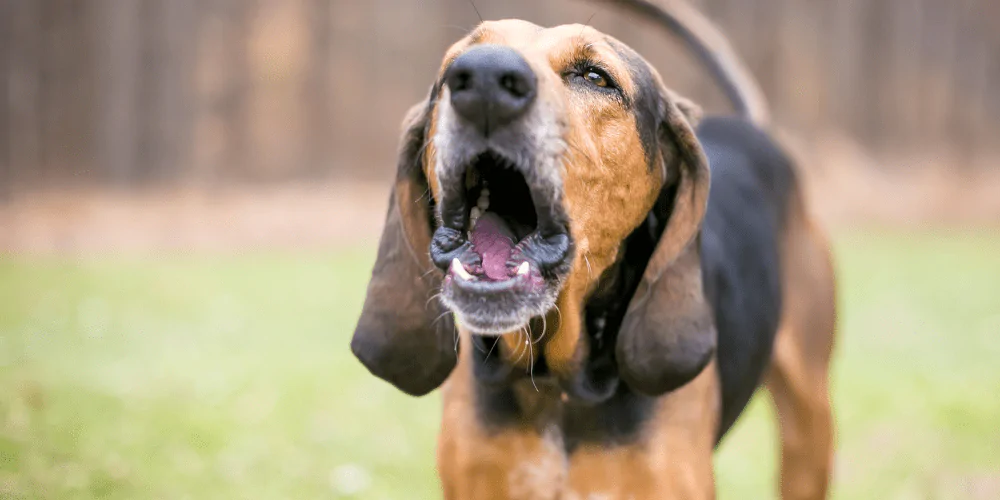
What is a reactive dog?
Reactivity is more of a general label that measures a dog’s response to things.
‘Negative’ reactivity is where dogs feel nervous, defensive, or are proactively offensive towards people they don’t know.
This can happen as soon as they see a stranger coming towards them or their house.
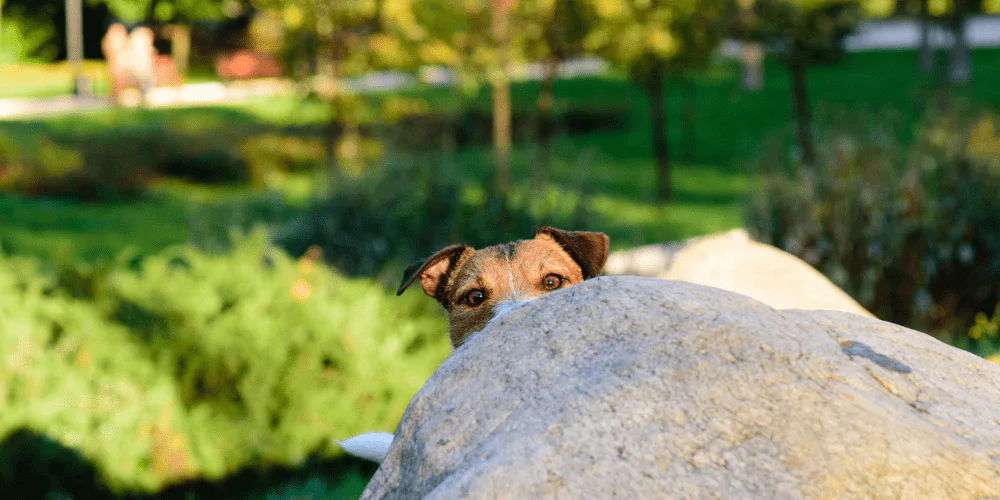
Why is my dog scared of people?
A dog can get scared of people and become reactive for many reasons, so let’s run through what could be causing the issue.
Rescue history
Do you know the history of your dog? It could be that they’ve:
- Suffered some abuse from a previous owner
- Not had enough human contact and positive interactions with people
- Had insufficient handling and so are afraid of what they don’t know
It can be very difficult to figure out the reactivity levels of a rescue dog if you don’t know their past experiences. So it’s a case of watching them carefully and taking the time to understand why they’re reacting.
Breed and genetics
When it comes to having a puppy from the start of their life, some key things can impact their personality:
- Breed
- Genetic history
- Suitability for the family
- How your dog is socialised with and trained by the family
Certain breeds have been exclusively bred to be more aloof or have guarding instincts around strangers (such as livestock or herding breeds).
Getting a working breed, no matter how much you admire them, doesn’t always make them a good family pet choice. Things can go wrong if your working dog doesn’t have a job or suitable training.
It’s also important to look at how the dog was bred. If both parents are nervous, it’s likely most of the litter will be born also having this personality trait.
In both situations, you’ll have to work extra hard with training and socialising to counter any inherited nervousness or breed-based behaviour.
Stress during pregnancy
The mum’s experience during pregnancy can also have a huge impact on her litter. Even if she’s generally happy and easygoing, any stress hormones she experiences while pregnant can pass onto the puppies.
This means they’ll be born with less tolerance to stress and can become reactive if not handled correctly.
That’s why picking a good breeder is so important. A responsible breeder should:
- Give mum a safe and relaxed pregnancy
- Expose the puppies to lots of sights, sounds, and smells during their first eight weeks
- Help the puppies become mentally resilient by giving them lots of experiences while they’re still growing
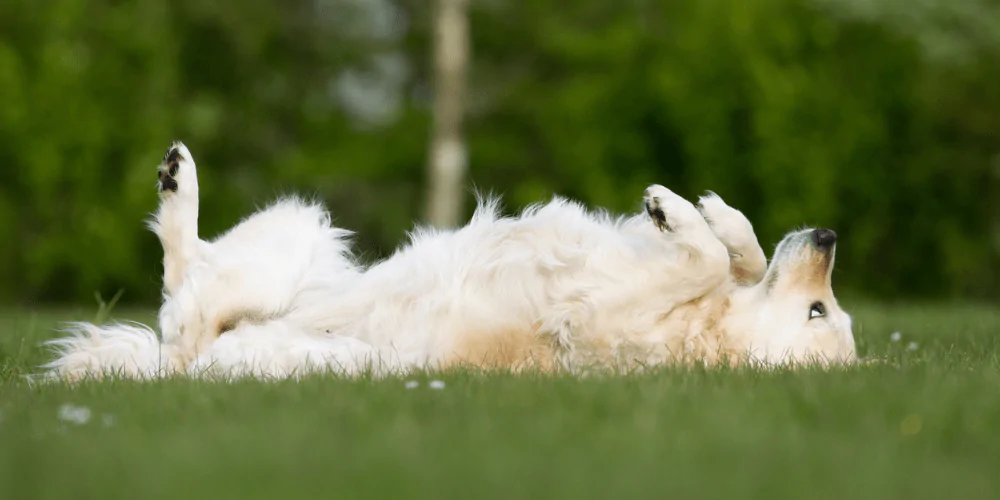
Signs of a dog who is scared of people
Your pup can show you they’re worried or scared through both subtle and obvious signs. Here are some of the things you need to look out for.
> The five ‘Fs’ of dog stress
To understand if your dog is stressed, watch for the five ‘Fs’:
- Fight – going on the offensive by barking and charging to get someone away.
- Flight – trying to create distance by moving away or hiding.
- Freeze – lying frozen on the floor, either on their belly or back. This is a dog who doesn’t know what else to do, not inviting you to touch or rub their belly.
- Fool around – barking and bouncing around the stranger. This shows discomfort and is not inviting you to play.
- Flock – obsessively jumping up or pawing at your leg for help. This is different from attention-seeking as it happens when a stranger is close by.
> Subtle signs of dog fear and anxiety
First, a dog will show a range of calming signals to avoid conflict and ask for space from an approaching stranger.
These can include:
- Lip licking
- Eye darting – eyes flicking from side to side
- Avoidant head turning – head turning from side to side
- Wrinkling the forehead
- Creases in the corner of the mouth
- Excessive blinking
- Displacement sniffing
- Yawning
> Escalated signs of dog fear and anxiety
Ignoring a dog’s calming signals will leave them with no choice but to escalate their behaviour. This is known as Kendal Shepherd’s ‘Ladder of Communication’.
Here’s a quick breakdown of how your dog’s behaviour escalates after those initial calming signals:
- Ears go back and try to creep away
- Start to stand crouched with the tail tucked under
- Lie down with the leg up, go stiff and stare
- Low growl
- Deeper growl
- Air snap
- Bite
As you can see, looking out for those early signs from your dog that they need help can help to avoid more serious reactions.
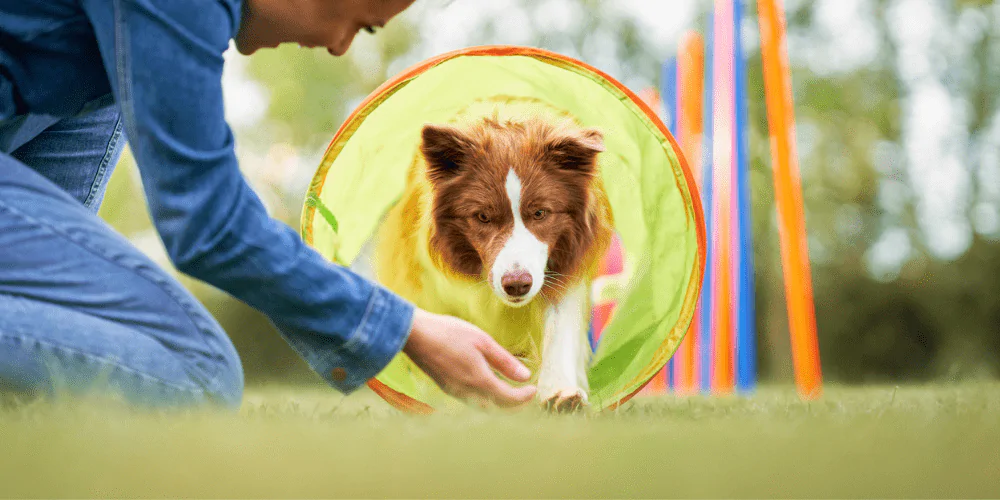
How to prevent dog to human reactivity
Preventing dog to human reactivity begins before you get your puppy or rescue dog.
When it comes to choosing the right dog for you, do your research. This includes:
- Reading about what the dog was originally bred to do.
- Looking into all the breed personalities if you’re getting a mixed breed.
- Understanding whether you can give them the exercise, stimulation, training, socialisation, and rehabilitation they need.
Not meeting your dog’s needs causes boredom, frustration, and poor mental health, which then leads to fears and phobias.
Even if you’ve chosen a suitable breed for your family, you still need to work hard at giving your dog plenty of enrichment. That means:
- Suitable amounts of walking or off-lead running in safe areas to keep them physically healthy.
- Letting them have at least 20 minutes of sniffing on walks to keep them mentally fit.
- Training them and making the most of their intelligence, especially if they are working breeds.
- Allowing them to do activities like scent work and agility – check they’re old enough and make sure you use a qualified dog sport instructor.
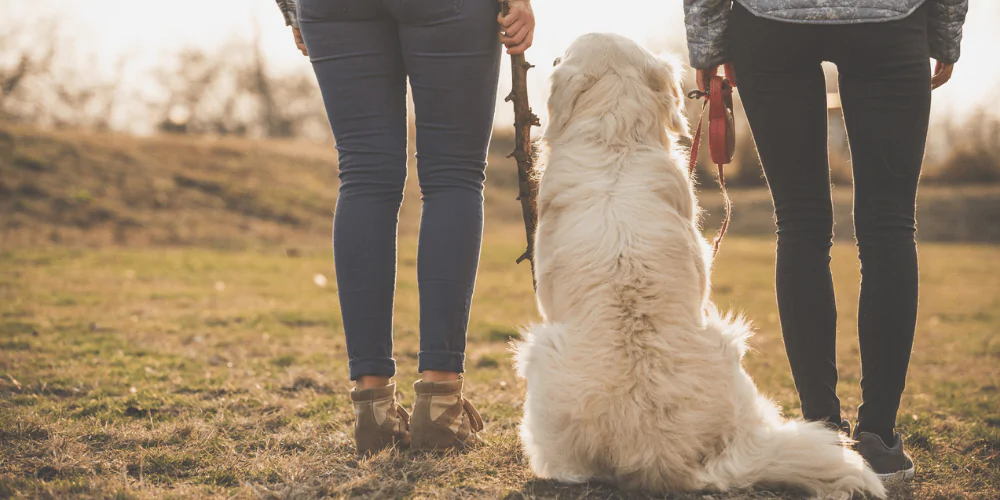
How to help a dog showing early signs of dog to human reactivity
Stand up for your dog
The biggest thing you can always do for your dog is listen to and advocate for them. It’s always better to slightly offend someone and tell them no to petting if your dog doesn’t want that interaction.
If you’re too embarrassed to stand up for your dog, they’ll feel threatened. This means you’re:
- Risking your dog escalating their warning signals up to a bite, which will lead to prosecution.
- Breaking your dog’s trust in you by doing nothing when a stranger tries to pet them and they’ve asked you for help.
Understand your dog’s triggers
Take the time to learn who is triggering your dog, whether that’s:
- Adults
- Teenagers
- Children
- Women only
- Men only
- All of the above
And with that in mind, be careful not to put your dog in situations that will flood them with triggers. For example, if your dog is wary of children outside the family, don’t take them to pick up your child from school.
Manage visitors in the home
If particular people are coming to the house who your dog doesn’t like, you need to:
- Give your dog a safe space elsewhere
- Make sure your visitor knows the rules of leaving the dog alone
Allowing your dog to have distance and choice over who they do and don’t greet can help them feel more empowered. They also know they can trust you to look after them and protect their wellbeing.
> Things you should never let strangers do with a scared dog
Whether you’re out and about or at home, never let a stranger do any of the following with your dog:
- Stare – dogs find this behaviour threatening.
- Talk directly to them – ignoring the dog is better.
- Bend over them – another behaviour that is extremely threatening to dogs.
- Encroach on their space – especially if your dog is trying to create space by barking or moving away.
- Intice them with tasty food held in their hand – this may occasionally work if a dog is mildly nervous but can be ineffective with a greedy dog. The lure of the food will make them want to get closer. But then they will become more fearful once the food is gone and they realise how close they are to the stranger. This can then mean they become too scared to go near anyone with food again.
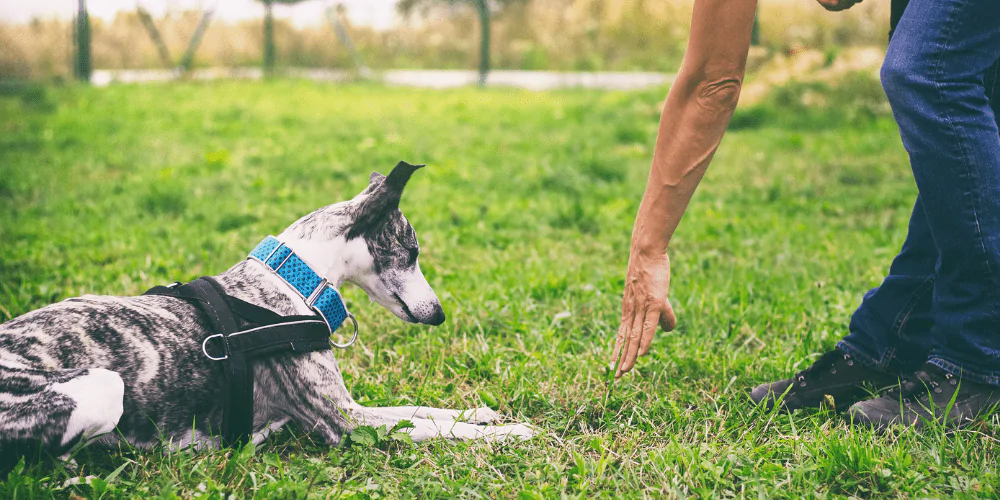
What to do if your dog shows escalated signs of reactivity towards humans
If your dog’s fear is escalating to showing signs of aggression, always go to your vet for a full medical check-up. Dogs who are poorly or in pain feel a greater need to protect themselves and that’s how fear and anxiety can creep in.
Once you’ve ruled out a medical issue, you must get in touch with a qualified dog behaviourist. You shouldn’t try and work through aggression issues yourself due to the Dangerous Dogs Act.
The good news is that some dog insurance providers include behavioural sessions as part of your cover.
> How to socialise a reactive dog to humans
Socialising a reactive dog is something that should only be done by a qualified behaviourist.
To decide the best way to help your dog, they’ll first look at:
- The dynamics in your house
- The timeline of your dog’s behaviour
- Their breed, age, and genetics
- The reason for the reactivity
- Whether they’re getting enough sleep, enrichment, or too much/too little exercise
- If they need basic training
Some of the basic cues a behaviourist will help teach your dog include:
- Settling in their crate
- Eye contact
- Focus
- Working to different positions
They can also look at introducing training foundations such as:
- Look at that
- Treat and retreat
- Distance phasing
- Behavioural adjustment therapy (BAT)
- Counter conditioning
- Desensitisation


